Visit The Stunning and Irresisstible Chongqing City In China
The most important city in western China and the economic engine of the upper Yangzi, Chongqing City (重庆; Chóngqìng) is a massive and enthralling urban sprawl. Chongqing makes up for a lack of top-notch sights with fantastic food and charismatic geography: its combination of steep hills at the confluence of the Yangzi and Jialing Rivers is a prelude to the even more dramatic scenery of the Three Gorges downstream.
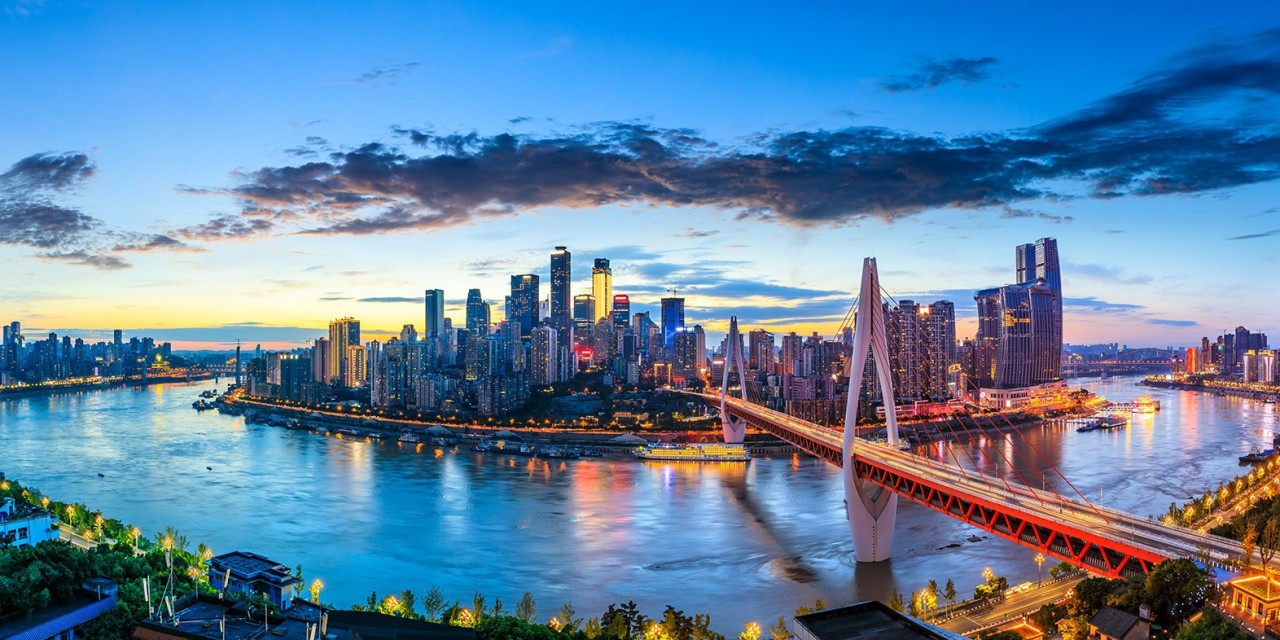 |
| Photo: chinadaily |
Chongqing was a part of Sichuan Province, but it was made a "municipality" in 1997. In China, a municipality is a big city with a big territory. Chongqing is one of four municipalities in the country. It is a city with a long history, and it was important as an inland port near the rich Sichuan region. Traders came overland or by river.
It is located at the place where the Jialing River meets the Yangtze River. Perhaps because the Chongqing area was out of the usual travel routes, the fragile rock carvings at Dazu and the fragile natural cave scenery at Wulong remained comparatively unspoiled. Around the Chongqing urban area, there are some scenic and historical highlights such as Dazu County with ancient rock carvings and art, the rocky scenery at Wulong, the Zigong Dinosaur Museum, the Yangtze River and the 3 Gorges Dam.
History of Chongqing
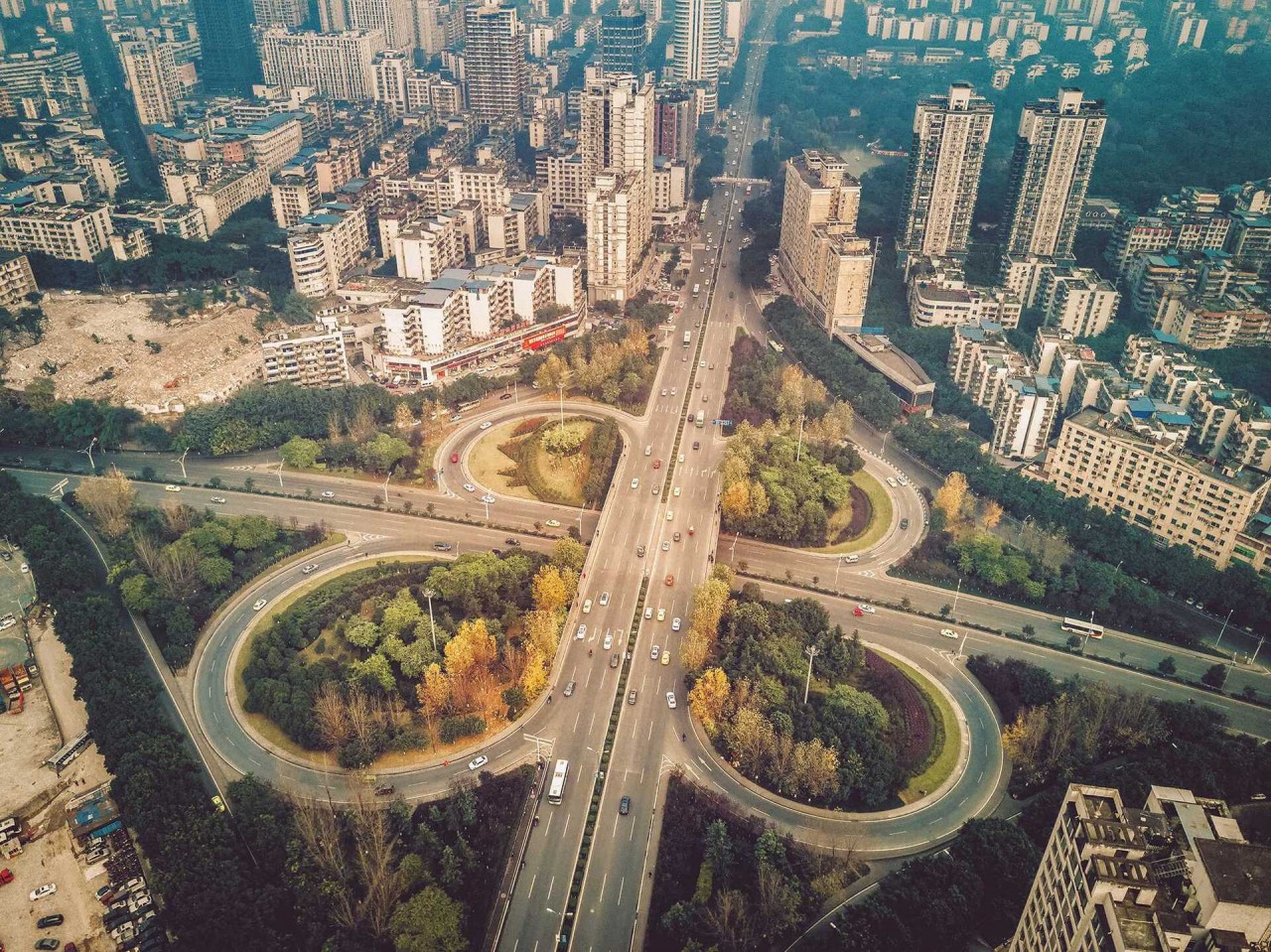 |
| Photo: tomtom |
According to ancient accounts, Chongqing was the birthplace of the consort of the legendary Yu emperor, founder of the Xia dynasty, about 4,000 years ago. In the 11th century BCE, under the Xi (Western) Zhou dynasty, the region surrounding Chongqing became a feudal state known as Ba. In the 5th century BCE Ba established relations with the mid-Yangtze kingdom of Chu. It was later incorporated into the Qin empire. By the mid-3rd century BC the region was part of the kingdom of Shu and was totally independent of northern and central China.
The swing of the historical pendulum—in which the city and its surrounding area’s status alternated between forming part of an empire in northern and central China and detaching itself to become independent of both northern and central China—continued throughout subsequent centuries. The city became an integral part of the unified Chinese empire first under the Ming dynasty (1368–1644) and then under the Qing, or Manchu, dynasty (1644–1911/12).
The first substantial city wall was constructed about 250 BCE. It was repaired and expanded during the 3rd century CE and about 1240 and was rebuilt with solid stone early in the Ming period. In the 1630s, near the end of the Ming, the rebellion of Zhang Xianzhong subjected Chongqing to plunder, slaughter, and destruction. The city wall was restored in 1663. Some 5 miles (8 km) in circumference, it had a total of 17 gates: 8 gates remained closed on the advice of geomancers (practitioners of divination by means of figures or lines), while 9 were open to traffic. Additional work was done to strengthen the city wall in 1760.
The modern period
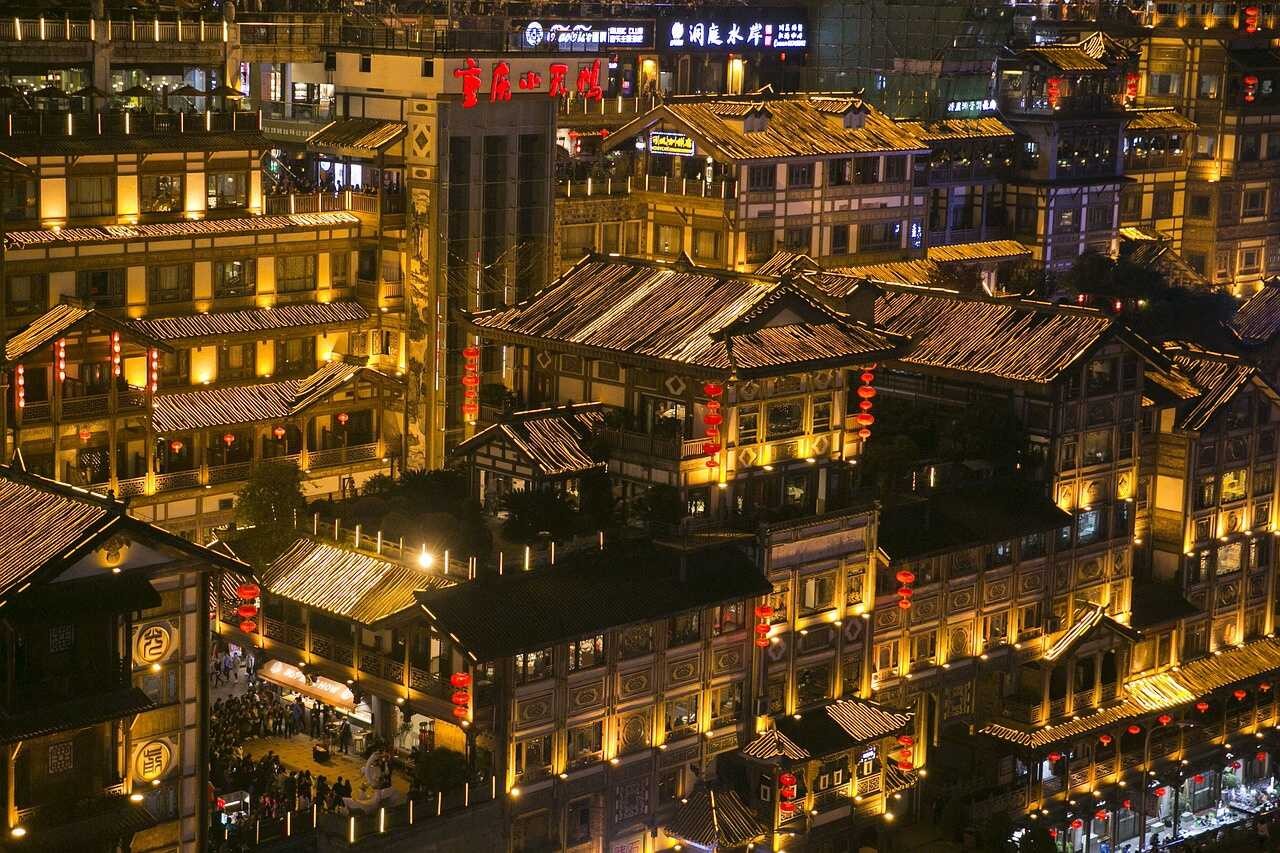 |
| Photo: destimap |
Chongqing was opened to British trade in 1890, but navigational difficulties on the Yangtze delayed steamer traffic for more than a decade. Meanwhile, the Treaty of Shimonoseki (1895), which concluded the first Sino-Japanese War (1894–95), gave Japan the right to access the wharves of Chongqing as well. Accordingly, in 1901, when British trade opened, a Japanese concession also was established at Wangjiatuo, on the south shore of the Yangtze. This concession lasted until 1937, when it was abandoned by Japan on the outbreak of the second Sino-Japanese War (1937–45).
In 1911, on the eve of the Chinese Revolution, Chongqing—along with the Sichuan provincial capital, Chengdu—played a major role in bringing about the overthrow of the Manchus; many patriots of the region joined the revolutionary party of the Chinese Nationalist leader Sun Yat-sen (Sun Zhongshan). Despite such progressive trends and a nominal allegiance to the central government, Chongqing was unable to break away from the grip of regional separatism.
Chongqing had been an independent municipality during the Nationalist period, but from 1954 to 1996 it was a city under the administration of Sichuan province. In 1997 it was separated from the province to become a provincial-level municipality directly under the central government. At that time, jurisdiction for the entire eastern portion of Sichuan was transferred to the new municipality, thereby greatly expanding Chongqing’s area and population. Chongqing’s population grew dramatically and its economy boomed after that.
Chongqing Attractions
1. Ciqikou Old Town
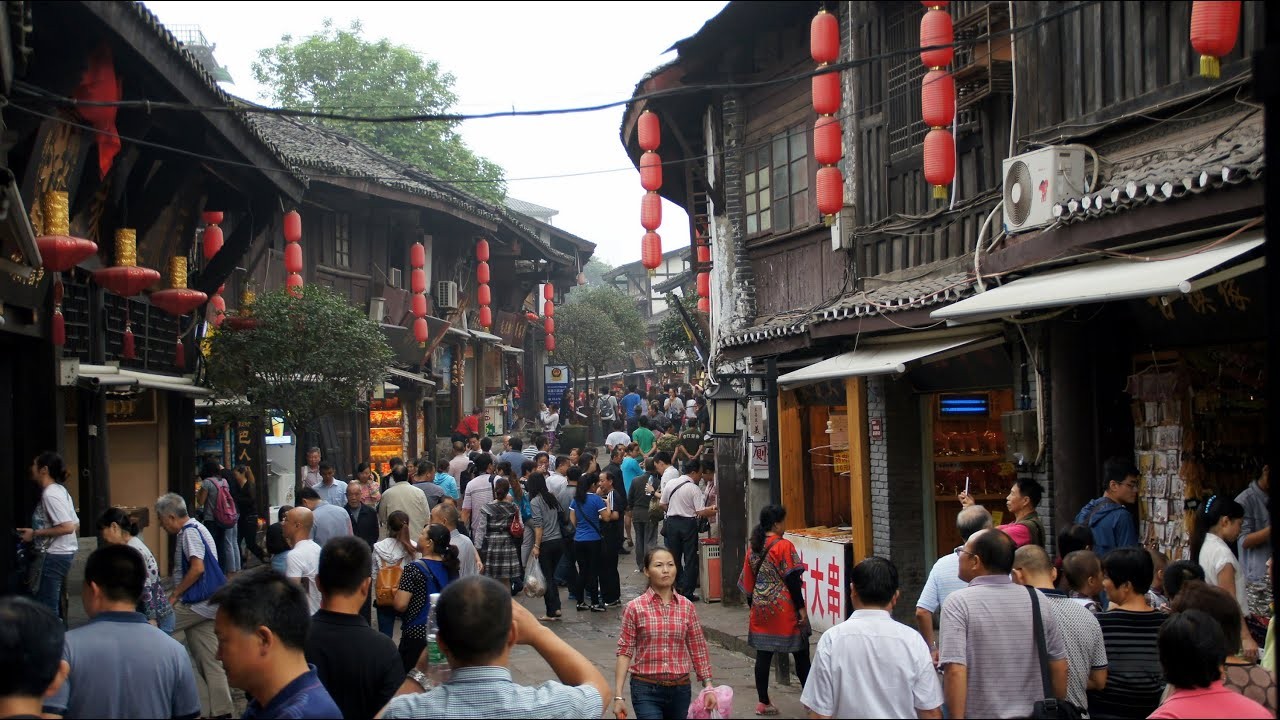 |
| Photo: Global Travel |
Ciqikou is on a hill above the Jialing River in the western part of Chongqing city. It is a small section of city with about two city streets and back allies that are set aside as a pedestrian shopping and dining area. The government wants to promote tourist business in the area. People go to shop and eat snacks and gourmet food. It is now a part of the city of Chongqing, but it was once was a prominent market and trade town next to Chongqing. In the Ming Dynasty, it was a river port and market town. Goods were transported over land and water. Some buildings have been renovated and preserved. Along the streets are shops for porcelain and other items and many restaurants and snack shops. So while you are shopping, you can eat and drink beverages at the same time. Some of the tea houses have performances of traditional Chinese music. It is a place to see more of how Chongqing used to be, eat and shop.
One of the major things tourists do is eat in the restaurants and shops. There are candied sweets, pastries, the Zhangfei Beef Shop where the owner dresses up in a strange custom, a restaurant for Indian food, and different kinds of stir-fried dishes with lots of hot chili pepper. Some dishes have so much chili pepper they look like they are mostly fried red chili pepper. There are noodles and fried donuts. There are all kinds of restaurants from snack shops to gourmet restaurants. One of the teahouses has a Sichuan Opera Face Changing Performance. This is fun to watch.
2. Loquat Mountain Park
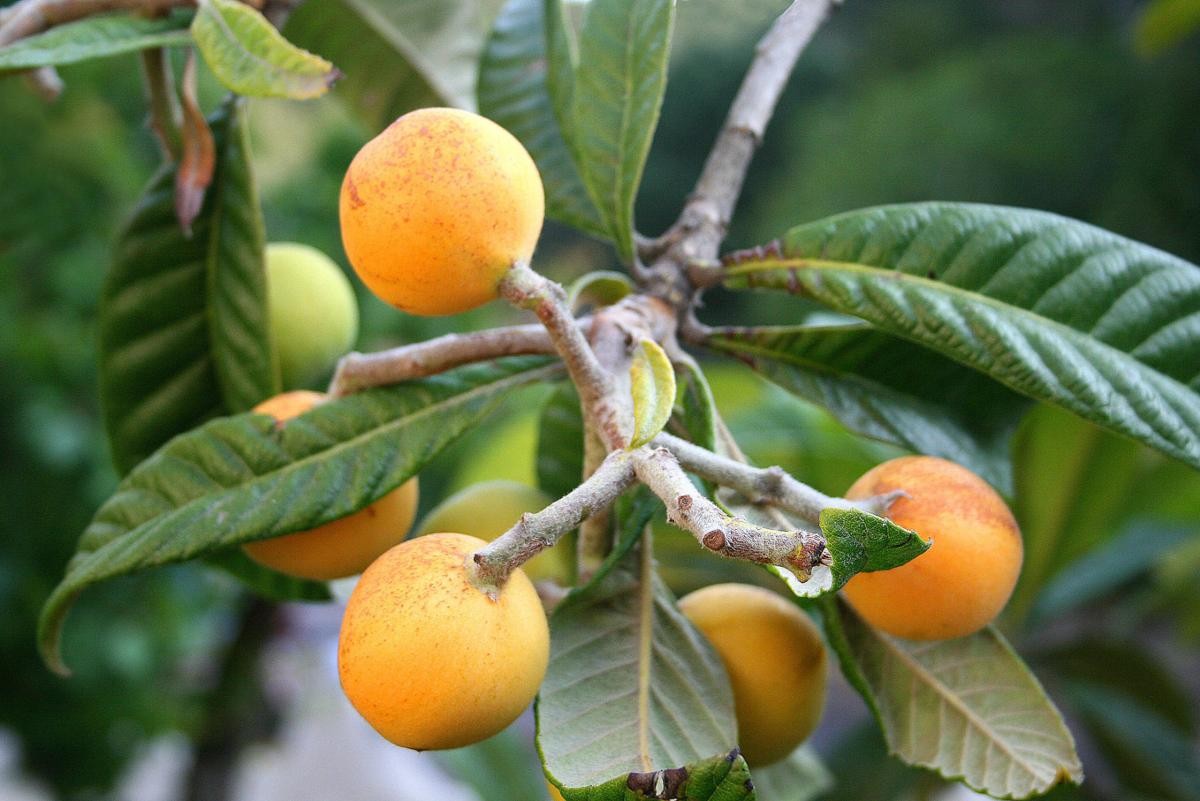 |
| Photo: Arizona Daily Star |
As its name implies, Loquat Mountain Park is located on Loquat Mountain which is 345 meters above sea level, at 2 Zhongshan Road, Yuzhong District in Chongqing. The park is the highest place in the old urban area and it has one of the most commanding elevations in the city center.
Loquat Mountain Park is considered to be an oasis of the modern city because of its winding roads, dense growth of evergreen trees and bamboos, flourishing flowers and grasses, and fresh air. The park is always an ideal place for people to watch the nightscape in Chongqing, the 'mountain city'.
About its name, there are three sayings: some people believe that its name comes from an abundance of loquat trees once planted on the mountain; some people think that the mountain looks like the Chinese lute.
Others hold that there was a beautiful girl living on the mountain who played the Chinese lute at night to scatter wonderful songs to her beloved who lived on the south bank, and thus people called the mountain Loquat, after the girl. In Chinese, both "loquat" and "lute" sound like "Loquat".
3. Three Gorges Museum
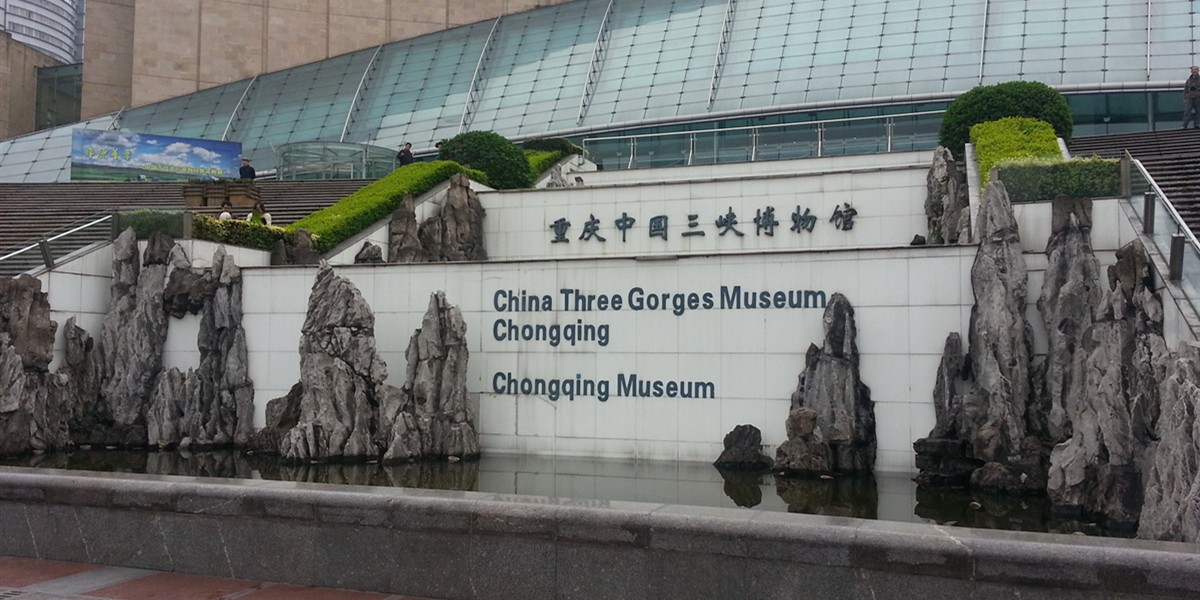 |
| Photo: iChongqing |
The China Three Gorges Museum was opened in 2005. It is a newly built museum with a construction area of about 40,000 square meters. It is near People’s Square and the Great Hall of the People. It is also called the Chongqing Museum. There are displays of Chinese art and of artifacts saved from the construction of the 3 Gorges Dam and the artificial lake. It instructs on the 3 Gorges region, the 3 Gorges Dam, the history of Chongqing and the surrounding area, Chinese history, and prehistoric times.
The museum was completed in 2005. It was meant to be a place to deposit artifacts saved from important historical sites submerged by the artificial lake behind the 3 Gorges Dam. Hundreds of archeological sites were submerged, and many objects were discovered and moved to the museum by various teams of scientists and archeologists.
The museum has four big themes: “The Splendid Three Gorges,” “The Very Ancient Ba Yu,” “The Urban Development of Chongqing,” and “The Anti-Japanese Days.” There are displays of antique art. There is a large model of the entire dam project, and information is presented about this impressive engineering achievement. There are also films shown about the bombing of Chongqing during WWII by Japanese planes and about the natural scenery in the Three Gorges area before the construction of the dam.
4. Langzhong Ancient Town
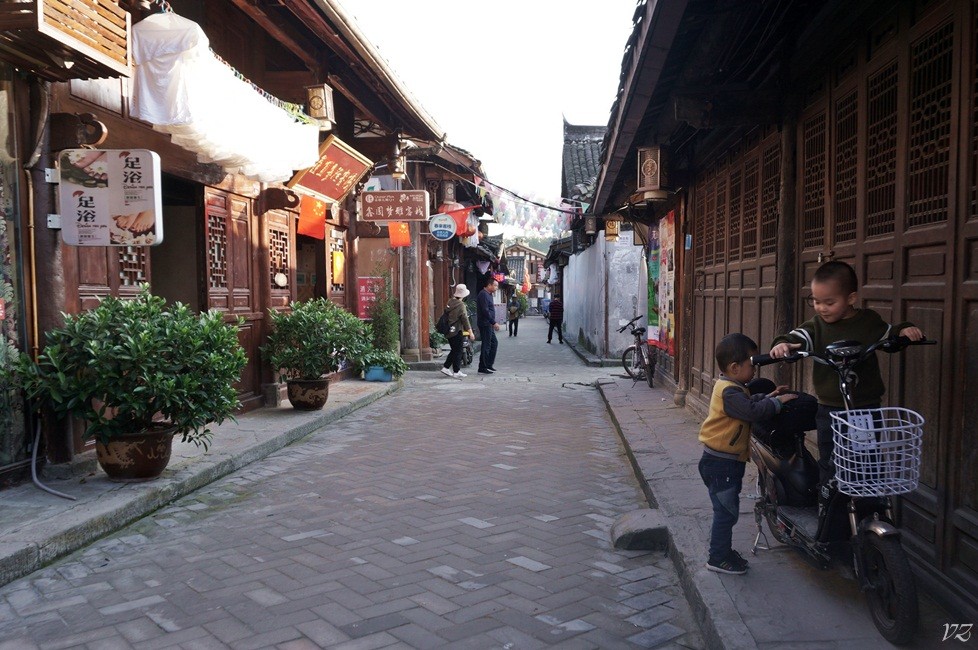 |
| Photo: Littlenomadid.com |
Located in the northern part of Sichuan Province and in the midstream of Jianglingjiang River, Langzhong Ancient Town is a famous historic and cultural town. Situated in the southern part of the urban area of Langzhong City, Langzhong Ancient Town is the only ancient town that has been conserved completely in Sichuan Province.
Langzhong enjoys a long history. In the Warring States Period, it was the national capital of the State of Ba. From Han Dynasty to Tang Dynasty, it was the astronomical research centre of China. In Ming Dynasty and Qing Dynasty, Langzhong had been the temporary provincial capital of Sichuan for 19 years at a time. Because of its unique geographical location, Langzhong has been the political, economic, military and cultural center of Sichuan Prvince all along.
What is especially worth mentioning is the special food there, which is known to all, far and near: the Baoning vinegar, Zhang Fei Beef, Baoning sweet steamed buns, Baoning wine, preserved duck eggs, noodles cooked with Chinese sauerkraut and tofu pudding, cold beef noodles with sesame sauce, noodles cooked with chopped entrails of sheep and beef, northern-Sichuan bean jelly…
5. Chongqing Zoo
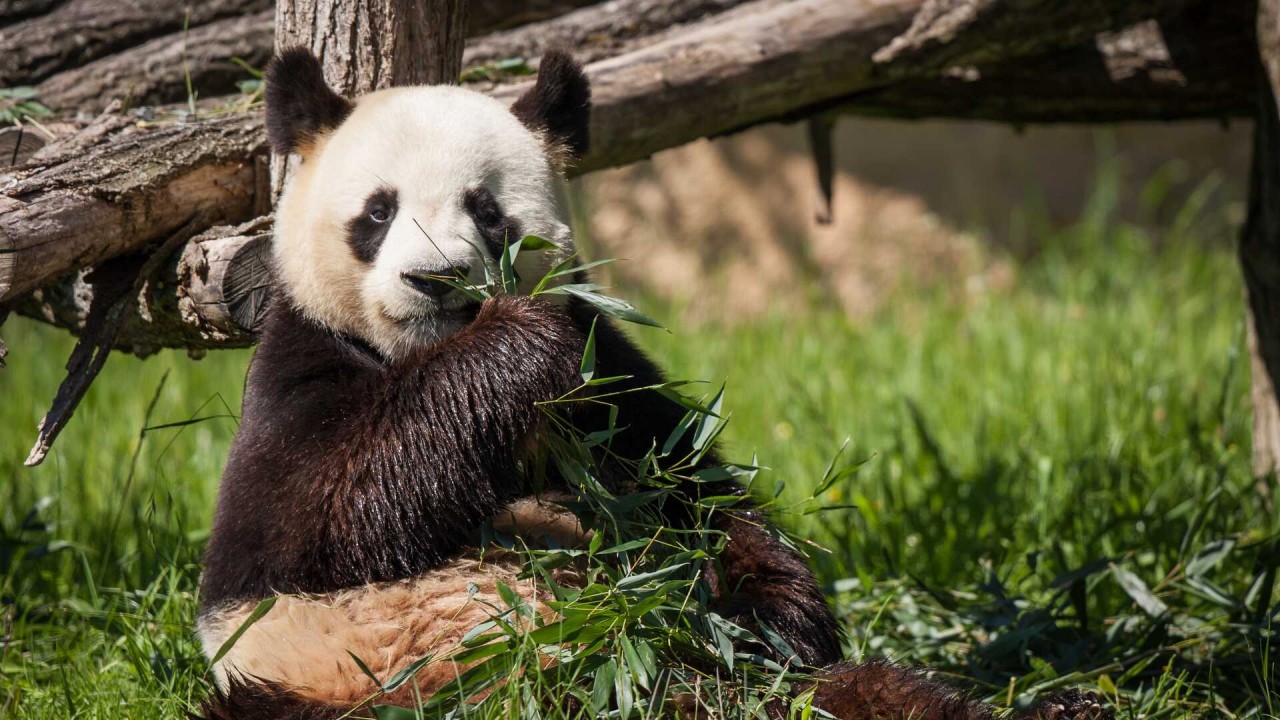 |
| Photo: peapix |
There is a large zoo is in the southern part of Chongqing. Chongqing Zoo has an area of about 45 hectares. There are over 200 species of animals and 1,000 birds. There is a tea house and restaurants. There are pens or corrals for animals and amusement facilities, and the two kinds of pandas in the Panda Room are the star attraction.
The zoo has an interesting variety of animals and amusement facilities. There is the rare South China Tiger. It is thought to be about the rarest kind of tiger. There may be less than 20 left in the wild. They used to live in forests in southern China. They are smaller than most tigers, and look lankier. There is also a Tibetan bear with a yellowish colored head that dances when people give it coke or goodies.
In the Panda Room, visitors can see the giant pandas and the cat-like small pandas, as well as their off springs. Between 8:30 and 10:30 a.m. is the panda feeding time when you can see the pandas feeding. The small pandas are a species of animal that look like big but unusually long house cats that move strangely. I thought that they are fascinating. Even though they look like cats, they are more beautifully colored and don’t act like cats.
The amusement facilities include an open stage and a roller skating rink and a children’s play area. There are restaurants and places to get beverages.
What to eat in Chongqin
Since Chongqing was originally part of Sichuan, most of the cuisine is Sichuan style and which is hot and spicy. Important ingredients in Sichuan cuisine are chilies, Sichuan pepper, garlic, ginger, and fermented soybean.
There are many excellent Sichuan dishes, including duck smoked over a mixture of camphor and tea leaves, then deep-fried, and bean curd scrambled with minced pork and spicy seasonings.
Another of the well-known Chinese dishes from Sichuan is Mapo Tofu, translated as “pockmarked woman’s tofu”. This dish originated in the 19th century, so the story goes, when Mrs. Chen, the pockmarked woman, created a spicy bean curd dish in her family-owned tavern.
Chongqing Hot-pot
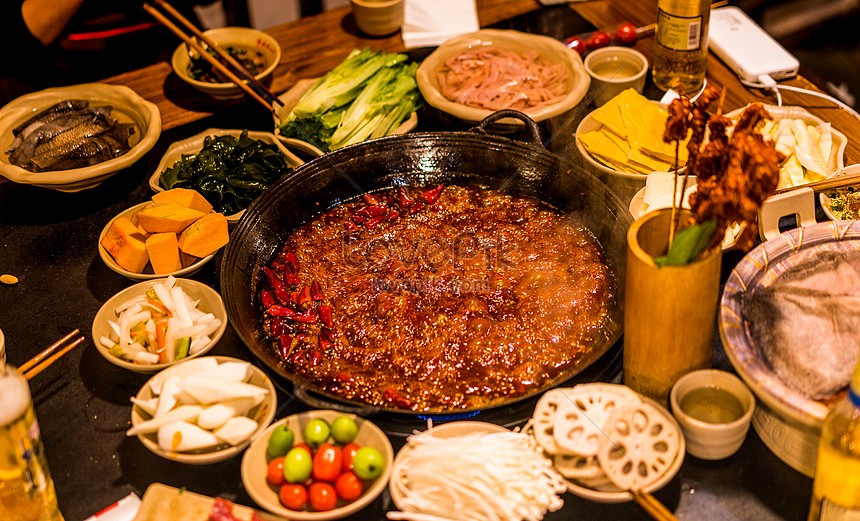 |
| Photo: Lovepik |
Hot-pot, one of Chongqing’s trademarks, is well known both at home and abroad. The fresh, fragrant, and spicy hot-pot of Chongqing provides many dining options. Today, despite its humble beginnings, Chongqing Hot-pot can be found all over China.
Love it or loathe it, one can’t visit Chongqing without trying the local hot pot at least once!! What is it about this dish that you might view with disgust and disdain, yet is so revered by locals and even some visitors. How does a dish like Chongqing hot pot rise from such humble beginnings to now be regarded as a gastronomic delight and the ‘signature dish’ of the whole region?
To find out how this happened let’s dive into the history of hot pot. The Chinese have been eating from ‘hot pots’ for more than a 1000 years and they most likely originated in Mongolia. There doesn’t seem to be a definitive history of hot pot in Chongqing until the late Qing Dynasty (1644-1911) Things began to change in the late 19th century, when live cattle from Sichuan, Guizhou and Yunnan provinces were transported by river, slaughtered, sold or preserved in the port of Chongqing. The best cuts of meat were shipped out or sold to the upper and middle classes while the internal organs, including stomach and kidney, were discarded or sold cheaply.
Little went to waste around the docks of Nanji Men in those days and the porters, water carriers, sailors, boat trackers, washer women, and the night soil porters were quick to pick up on the discarded offal, adding it to their little clay pots. Known as毛肚火锅Maodu Huoguo, after the tripe it contained, this soon became a popular, low cost dish amongst the poor. A pinch of salt, spice and numbing peppers gave an otherwise bland and mundane meal a lot of zing.
Gan guo & Chuan chuan
Gan guo (literally: dry pot),different from hot pot which needs a soup.
Just sit back and watch the staff cook your order for you. The ingredients of a dry pot are usually a mixture of vegetables or meat. Dry pots are cheaper and come in three sizes. They are not usually as hot as hotpot.
Chuàn chuàn is similar to hotpot but the ingredients a threaded on wooden skewers an dipped into the pot to cook.
Xiao Mian
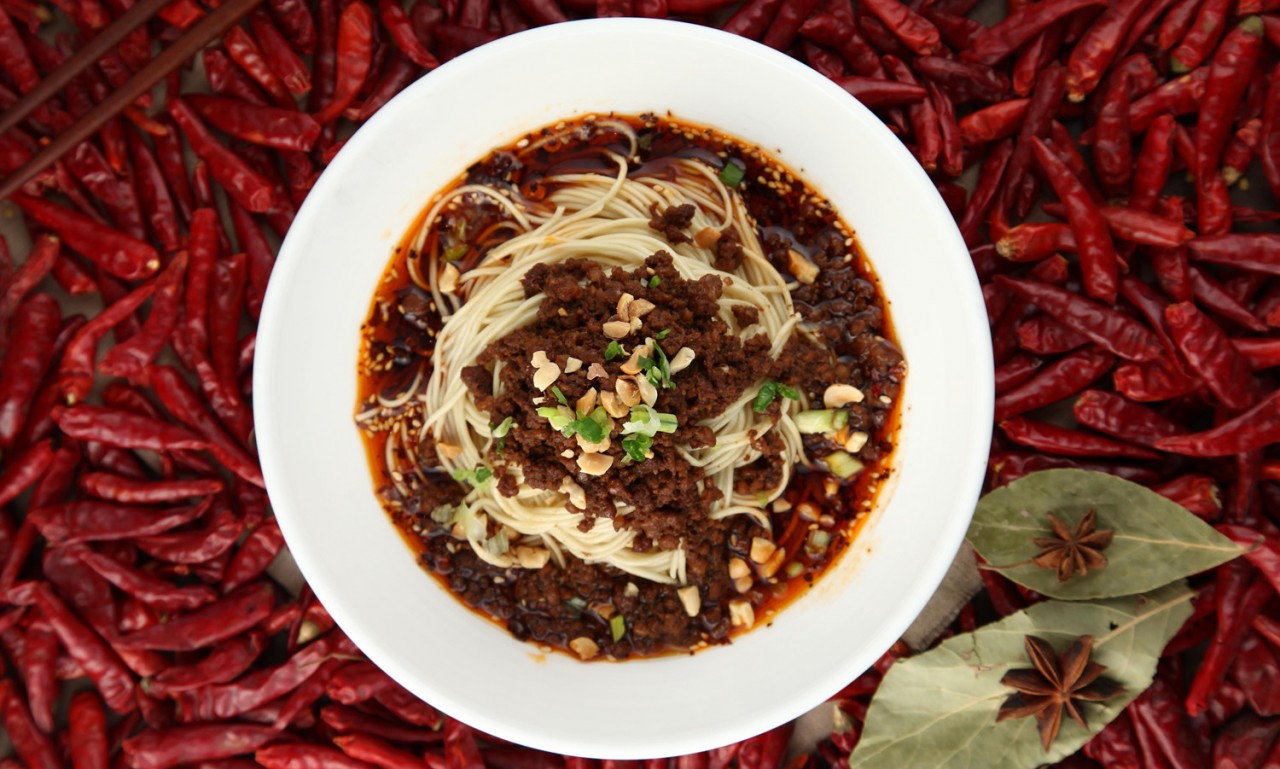 |
| Photo: Chongqing Guide |
Xiao Mian, another Chongqing specialty, is a vegetarian noodle. Being cheap and quick to prepare, Xiaomian is popular with the locals. Passion for Xiaomian is similar to that of hot pot. Xiaomian is available in almost every Chinese restaurant. (Small, medium, large bowls). Each restaurant has its own secret recipe. Xiaomian can be eaten for breakfast, lunch or dinner. It’s all up to you.
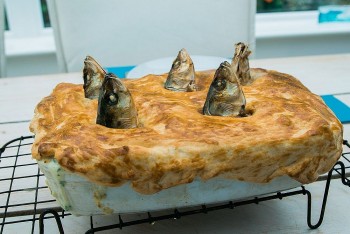 | The Weirdest British Dishes Britain has some uniquely named dishes that are a must-try for visitors to the UK. |
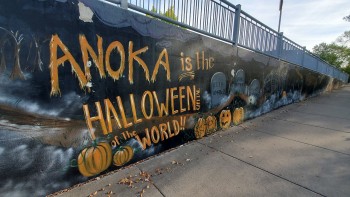 | Visit Anoka – The Wonderful Halloween Capital In The World For almost a century, Anoka, this small city in Minnesota has been celebrating Halloween like no other, holding a community-wide celebration in honor of October ... |
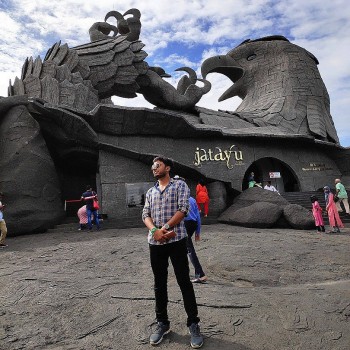 | Explore The World’s Largest Bird Sculpture in India The world’s largest bird sculpture in India took artists 10 years to complete |
Recommended
 Travel
Travel
Strategies for Sustainable Growth of Vietnam’s Tourism from International Markets
 Travel
Travel
Vietnam Strengthens Its Presence On The Global Tourism Map
 Multimedia
Multimedia
Phong Nha-Ke Bang National Park Named Top Adventure Travel Site
 Travel
Travel
Vietnam Welcomes Record-High Number of International Visitors
 Travel
Travel
Luxury Train From Hanoi To Hai Phong To Be Launched In May
 Travel
Travel
Phong Nha Named Top Budget-Friendly Travel Destination for Spring 2025: Agoda
 Travel
Travel
Four Indian Films Introduced to Lao Cai Audience
 Travel
Travel


